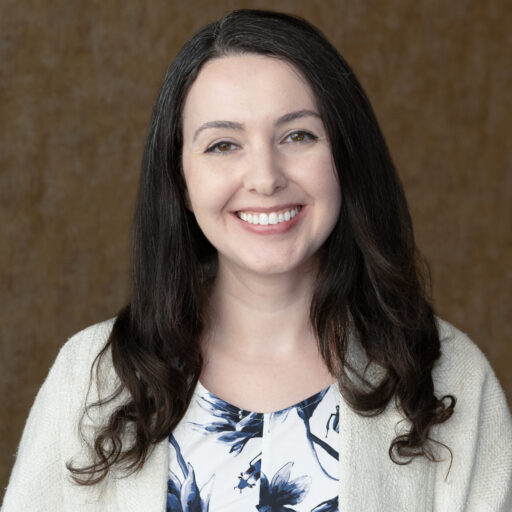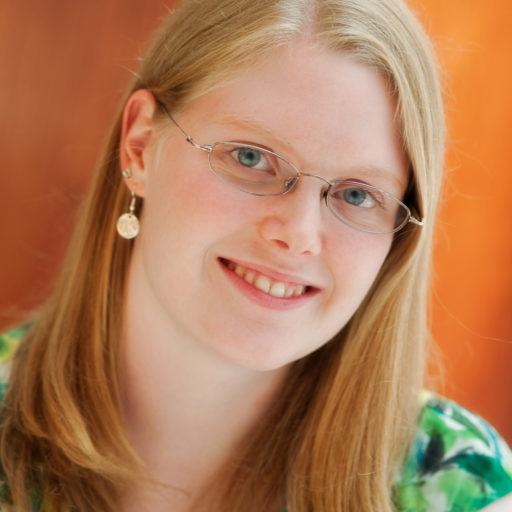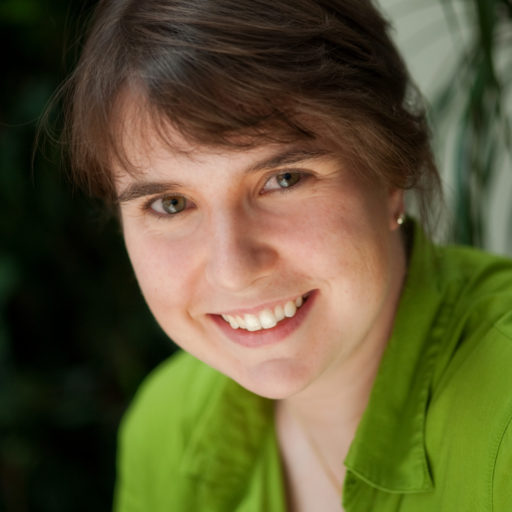In order to design instruction that fosters the development of scientific practices in students, teachers study and inquire into student learning. As a group of biology Teaching Fellows from the Knowles Science Teaching Foundation (KSTF), we share a common goal of inquiring into how students learn science to provide opportunities for deeper learning in our classrooms. Jen Cartier of the University of Pittsburgh introduced us to the Five Practices (5P) for orchestrating productive class discussions during a meeting of the KSTF community (Cartier J., Smith M., Stein M.K. & Ross, D., 2013). Most of the literature at that time explained the use of the 5P for mathematics tasks, and the 10 of us who teach biology decided to pursue its application in our classrooms as well. This article explains how we developed our understanding and shared our knowledge of 5P with other teachers, both locally and nationally, and how this process gave us a deeper understanding of 5P itself.
OUR INITIAL WORK AROUND THE FIVE PRACTICES (5P)
Traditionally, classroom lessons that involve problem solving and presentations have student groups engage with one particular task. During class presentations, student groups each present their entire solution to the same problem. During these presentations, it is difficult for teachers to emphasize important student understandings in a coherent, productive narrative. Additionally, students may stop paying attention after the third or fourth identical presentation. However, by using the 5P, teachers present student groups with cognitively demanding tasks that require them to generate multiple solutions, make comparisons, or identify patterns in data. Following student work on the task, the teacher sequences the presentations in such a way that no two groups are presenting the exact same idea. As a result, students see the “story” behind the lesson’s main idea unfold as different groups explain their part. Before students even begin working on the task, the teacher follows a series of steps to structure the discussion as outlined in 5 Practices for Orchestrating Productive Mathematics Discussions (Smith & Stein, 2011).
Prior to the lesson, teachers anticipate how students will engage with the task, considering multiple outcomes and possible roadblocks students will encounter. As students engage with the task, the teacher monitors the progress of each group. After task completion, the teacher selects portions of student findings to share with the class, and sequences the responses into a narrative. This differs from traditional presentations because student groups only present certain information. For example, in an experimental design task used in a biology classroom, some student groups present on their lab setup while other groups present their data analysis. Finally, during discussion the teacher assists students in connecting ideas centered around the essential understandings.
Since there was not a sufficient library of tasks to support this 5P approach in biology, we wished to spend time developing biology tasks for our classrooms. Using KSTF professional development funding, we designed our own workshop where we developed tasks in biology. One teacher, Sarah Hawthorne, designed a task around genetic counseling to help students decipher inheritance patterns and pedigrees. Another Fellow, Laura Nutter, created a task around the evolutionary patterns of ensatina salamanders as a ring species. Additionally, several teachers created a “membrane task” where students design models to test selectively permeable membranes (Follow this link for an example).
We then implemented these tasks in our classrooms and continued to review, reflect, and revise the tasks and their method of implementation. For instance, when using the membrane task, teacher Kristin Germinario found that the task generated more rich discussion around the design and testing of model systems in addition to content. In a typical diffusion lab each student group designs the same test and achieves the same result; in this case, student groups were excited to see the results of their unique design and share their part of the overarching story with the class. Through this process, we began to learn more about the nuances of the 5P and wanted to create a way for other teachers to learn about the 5P process.
“After using some of the 5P tasks in my classroom, I realized that it was a great way to conduct student discussion, and I wanted to tell other teachers about it.”
– Laura Nutter, KSTF Senior Fellow
SMALL-SCALE WORKSHOPS WITHIN OUR OWN LOCAL SCHOOL CONTEXTS
We began sharing our work with others through workshops and small-scale presentations. One Fellow within the cohort, Sarah Hawthorne, presented about 5P at a regional POGIL (Process Oriented Guided Inquiry Learning) workshop in Colorado, as well as to a group of colleagues at her school. As a result, at least two teachers in her department showed interest in trying 5P and observing the Practices in classrooms. Additionally, colleagues provided feedback on the presentation. One teacher commented that 5P was the first method she had seen that allowed students to both practice problemsolving skills while also engaging in content—a concern for her because of new Next Generation of Science Standards (NGSS) standards. This process allowed us to meet two major goals: disseminate knowledge of 5P to others, and receive feedback on our presentation. This practice and feedback motivated us to share our knowledge of 5P on a larger scale.
“When I saw that my colleagues were really interested in 5P, and wanted to try the things I was talking about, I realized that what I had to share was worthwhile. And if my colleagues were interested, maybe other teachers around the country would be, too.”
– Sarah Hawthorne, KSTF Senior Fellow
We also saw KSTF’s annual Summer Meeting as a good opportunity to share 5P with a larger group of teachers.
LARGER-SCALE PRESENTATION TO MATH AND SCIENCE TEACHERS AT KSTF SUMMER MEETING
Using the feedback received from the smaller workshop presentations, we designed a presentation for our first interactive workshop on 5P at the 2013 KSTF annual summer meeting. Four teachers from the cohort—Laura Nutter, Kristin Germinario, Nicole Lien, and Emma Ross—collaborated prior to the meeting to develop a presentation with sample tasks to share with other teachers. During the presentation that summer, other members of the cohort—Rachel Clausen, Brittney Barickman, Helen Snodgrass, and Sarah Hawthorne—observed the presentation and took notes. In addition, our KSTF Program Officer for Teacher Development Michele Cheyne recorded the presentation. After the presentation, the presenters gave questionnaires to participants for their feedback. As presenters, we learned even more about the 5P method itself by having other Fellows experience the 5P as participants.
“When designing the presentation of 5P for other KSTF Fellows, it pushed me to truly understand how the practices are used to orchestrate classroom discussions. I do not think I truly understood the 5P until after presenting it to other colleagues.”
– Kristin Germinario, KSTF Senior Fellow
In addition to giving us the opportunity to collaborate, this experience at KSTF’s summer meeting gave us valuable feedback from other Fellows. The feedback encouraged us and helped us see the importance of presenting to wider audiences.
SESSION FEEDBACK FROM KSTF FELLOWS:
“I found it to be rather helpful in getting students to be at the center of classroom discussions. All too often mine have been students sharing their results and finding and it being repeated over and over. This was an interesting way to organize a “story” and have students check in at different parts to complete the story.”
“Seriously, this was a fantastic session, and I walked away feeling like I could use pieces to make more really awesome class discussions this upcoming year.”
We not only learned more about the process of 5P, but we also gained the confidence to take our presentation to the national level.
NATIONAL-SCALE PRESENTATIONS AT NSTA AND NABT CONFERENCES
Immediately following the KSTF presentation, our cohort met to debrief the presentation. Together we combined the presenter’s thoughts with the notes from the observers to strengthen and modify the presentation for the National Association of Biology Teachers (NABT) Conference, which was held in Atlanta in November 2013. One topic we discussed was the balance of the presentation—the amount of time that the presenters spoke versus the amount of time the participant had time to work and practice. Participants at the KSTF summer meeting appreciated this practice time, and one noted that what she found “particularly useful” about the session was “walking through the planning stages for the Practices.” Another participant wrote “It was great to…have some experience trying out the Five Practices framework!” This hands-on experience with 5P was clearly important to participants’ learning.
Based on this feedback, we decided to reserve as much time as possible for participants to work through the Five Practices on their own. As a result, a major change was made between the KSTF summer meeting presentation and the later presentation at NABT: we decided to give fewer examples of 5P classroom tasks, and we did not spend as much time on the Practice of setting goals, so that participants could engage more quickly with the Practices of anticipating, monitoring, and selecting.
KSTF Fellows Helen Snodgrass, Brittney Barickman, and Rachel Clausen then brought the presentation to NABT. KSTF Program Officer for Teacher Development Michele Cheyne also attended this presentation and met with the presenters afterward to record their thoughts and feedback on the presentation. They aggregated the data from participant feedback along with our own reflection to provide a working document for the next team of Fellows, Laura Nutter and Sarah Macway, to use to further enhance the workshop for the National Science Teachers Association (NSTA) national conference in Boston in March 2014. From the NABT participant feedback, we learned that participants appreciated the interactive parts of the session and would like even more time to work on developing their own 5P lesson plans. We adjusted our presentation to include more opportunities to practice and less direct instruction, such as the directions included below:
Work with your group to create a monitoring tool that you could use to track student progress in your classroom. You may choose to make a tool to track an activity you already have planned so you can see how this practice is beneficial in any student-inquiry activity. From the NSTA 5P Slideshow
At this point in our presentation series, we realized the importance of making the presentations as relevant to other teachers as possible. Not only were teachers more engaged in the workshop, but they began thinking about ways to apply it to areas we had not explored, such as physical science and middle school courses. The process seemed to come full circle as we were now learning about our own product from the very people we were trying to teach it to.
THE IMPACT OF OUR WORK: ONGOING NATIONWIDE COLLABORATION AND DEEPER UNDERSTANDING OF THE FIVE PRACTICES
As a result of this initial series of iterations, we hope our work with 5P will spread nationally. Other teachers across the country, including KSTF Fellows in other cohorts, are engaging their students with inquiry tasks. These teachers are also inquiring into their own practices as they improve and develop the 5P to work best in their individual settings. With support from KSTF, we were able to learn about a method of orchestrating classroom discussion, develop tasks around this method, and grow in our understanding and confidence to share our ideas with others. Furthermore, in developing presentations on the 5P to educate others, we improved our own understanding of the 5P. Working together on the presentations allowed us to talk through what we saw as the most important points of the 5P and to discuss what it looked like in our various classrooms. In teaching others about 5P, we deepened our own knowledge of this inquiry method. Having the opportunity to revise our presentation helped us to realize that teachers gained the most from sessions that created an experience relevant to teachers’ own contexts and provided ample time for teachers to engage with the 5P.
Our desire to share 5P stemmed from our own passion about implementing it in our classrooms. The benefits students gain from asking and answering their own questions are invaluable in science education, especially as the demands of the NGSS require more independent skills from students.
For teachers, the excitement of allowing students time for self-discovery while being confident that they can guide students’ content knowledge development is an incredible tool. Though none of us could have predicted how much our own ability to implement 5P with students would improve through teaching it to adults, we saw our classroom practices change as we developed our own understanding through the workshops we implemented. We are all very proud to have developed this tool. We are also extremely grateful for the power of collaboration and our ability to work together as a group of dedicated and passionate teachers to affect education on a national level.
Kristin Germinario is a Knowles Senior Fellow. She has been teaching biology at Randolph High School in Randolph, New Jersey, since 2011, where she is known for her active collaboration with colleagues through facilitating professional development sessions, serving as a teacher mentor, developing interdisciplinary lessons, and participating on the team of teachers who are piloting an Advanced Placement Capstone program. As a KSTF Fellow, Kristin has brought Project Based Learning, the 5 Practices, and Complex Instruction strategies to her classroom. Kristin involves her students in engineering design challenges through her experiences with the Center for Innovation in Engineering and Science Education’s Project Infuse, and actively films and produces her own nature videos for her classroom based on her experiences with the Inquiry in Rainforests Program. Kristin holds a bachelor’s degree in biology with a minor in studio art and public health, and a master’s degree in teaching from Drew University. Kristin can be reached at Kristin.Germinario@knowlesteachers.org.
Sarah Hawthorne is a Knowles Senior Fellow who teaches science at Mountain View High School, a comprehensive public school near San Francisco, California. She enjoys finding new ways to help her students engage in complex topics related to biology, earth, and environmental science. In March 2015, a blog she wrote about her second year of teaching was published on the Education Week Teacher blog. Sarah holds a bachelor’s degree in biological sciences, with honors in ecology and evolution, and a master’s degree in education from Stanford University. Sarah can be reached at sarah.hawthorne@knowlesteachers.org.
Laura Nutter is a Knowles Senior Fellow. She has been teaching biology at TC Williams High School in Alexandria, Virginia, since 2011. In 2014, Laura was accepted into the third cohort of the AP Biology Leadership Academy, run by the National Association of Biology Teachers (NABT) and BSCS. The NABT/BSCS AP Biology Leadership Academy is a two-year professional development program designed to develop a new generation of leaders in biology education. Additionally, Laura was elected to serve as the chairperson of the Staff Advisory Council at her school. During the 2015–2016 academic year, she will lead the 20-member group as they meet with school administration on a monthly basis to discuss questions and concerns. Laura holds a bachelor’s degree in biology from Duke University and a master’s degree in education from Harvard University. Laura can be reached at laura.nutter@knowlesteachers.org.






